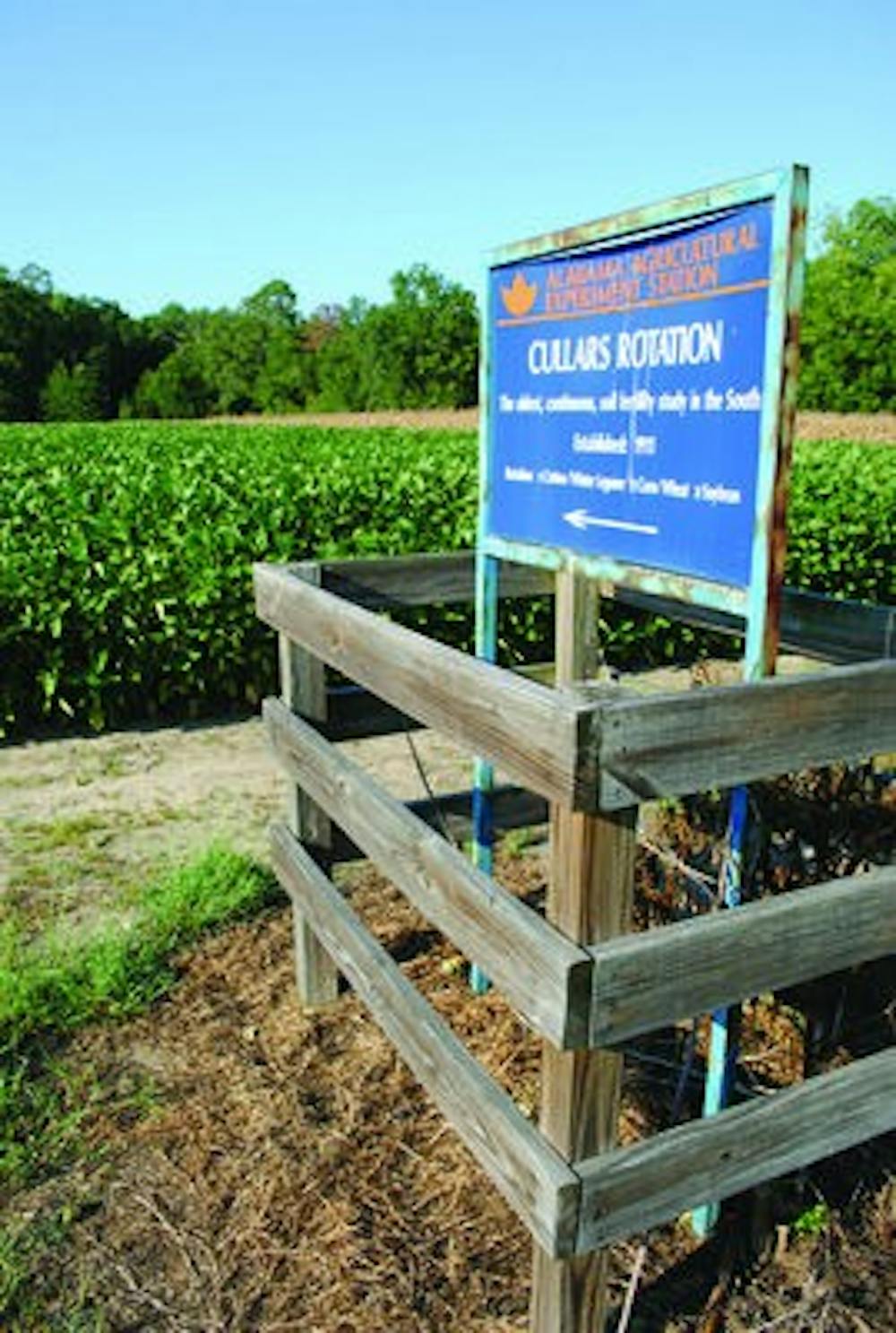The second-oldest cotton research field in the world has reached a century of continuous experimentation.
The rotation sits behind the Jule Collins Smith Museum of Fine Arts on South College Street and has served Auburn University since the 1880s.
Responsible for managing the rotation is Charles Mitchell, extension specialist and professor of agronomy and soils.
Mitchell said in 1911 the state legislature awarded the Alabama Polytechnic Institute funds to create a research station.
Using those funds, Auburn began the experiments on the land of J.A. Cullars.
"Each plot out there represents a different treatment that's been continued for 100 years," Mitchell said.
The history of the rotation goes back further than 1911.
"In the 1890s, there was a professor of biology here named George Atkinson," Mitchell said. "One of the problems for farmers in the South was that about this time of year, cotton would develop a kind of cotton rust. The leaves would turn orange then brown and fall off. Nobody knew what caused it."
Mitchell said Atkinson began researching different disease organisms involved in cotton rust, but discovered that all of these organisms grew on cotton as a result of the rust. The bacteria and fungi were symptoms of an unknown disease.
"Atkinson came in and started throwing some stuff out there," Mitchell said. "He found out that if he put out this mineral called kainit, that suddenly the rust went away."
Mitchell said kainit is a potassium-bearing mineral. This experiment led to the discovery of a potassium deficiency in Southern soil.
Another consequence of Atkinson's experiments was a drastic increase in the study and use of fertilizer, which eventually motivated Auburn to purchase the land from Cullars and begin the century of research.
"If you go down to that experiment, you'll see one plot that's got rust, same with the soybeans," Mitchell said. "You can't see that anywhere else in the world because people have been fertilizing for 100 years."
Involved in the planting and farming of the rotation since 1996 has been Dennis Delaney, researcher of agronomy and soils.
"We've had a lot of visitors come through," Delaney said. "It's the one place that we can really take people and show them fertilizer-deficient symptoms. Most farmers don't see the obvious symptoms like we do."
The Cullars Rotation isn't a simple historical perspective of agriculture in Alabama. The rotation continues to prove its agricultural significance.
"About the time that I got here, we went to conservation tillage, or no till," Delaney said. "The yields have steadily increased over the years."
Mitchell said the lack of tillage helps to conserve minerals in the soil and prevent erosion.
"Those plots have not had a plow put in them since 1997," Mitchell said. "It helps to conserve the soil because minerals don't wash away if they're not disturbed."
Mitchell said since tilling has stopped, the rotation has set record crop yields.
"The reason we're able to get such good production is because we're leaving the residue on the surface," Mitchell said. "The soil is actually improving."
The rotation was added in 2003 to the National Register of Historic Places.
Do you like this story? The Plainsman doesn't accept money from tuition or student fees, and we don't charge a subscription fee. But you can donate to support The Plainsman.





